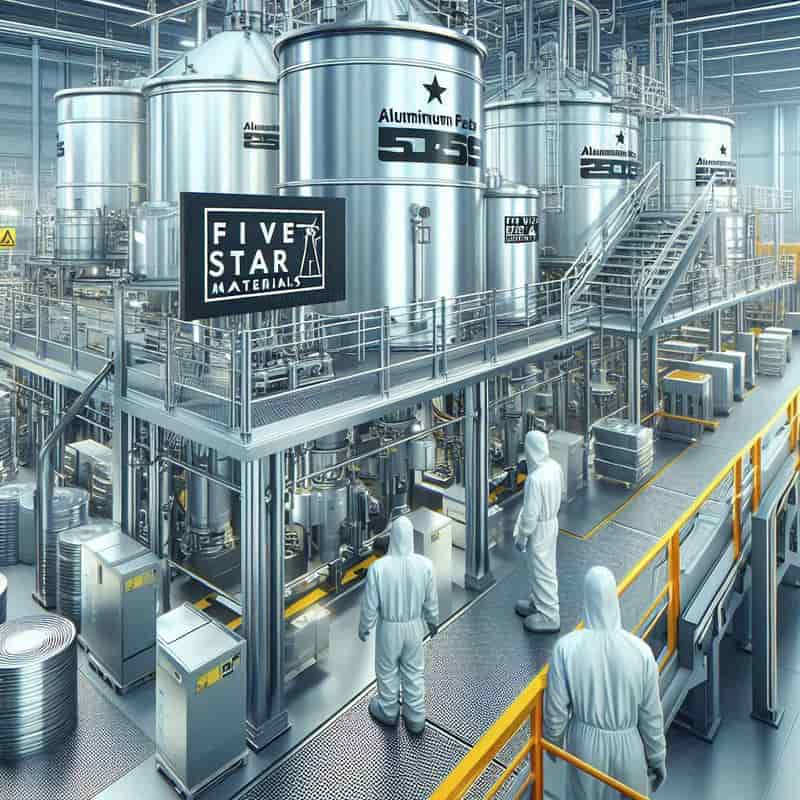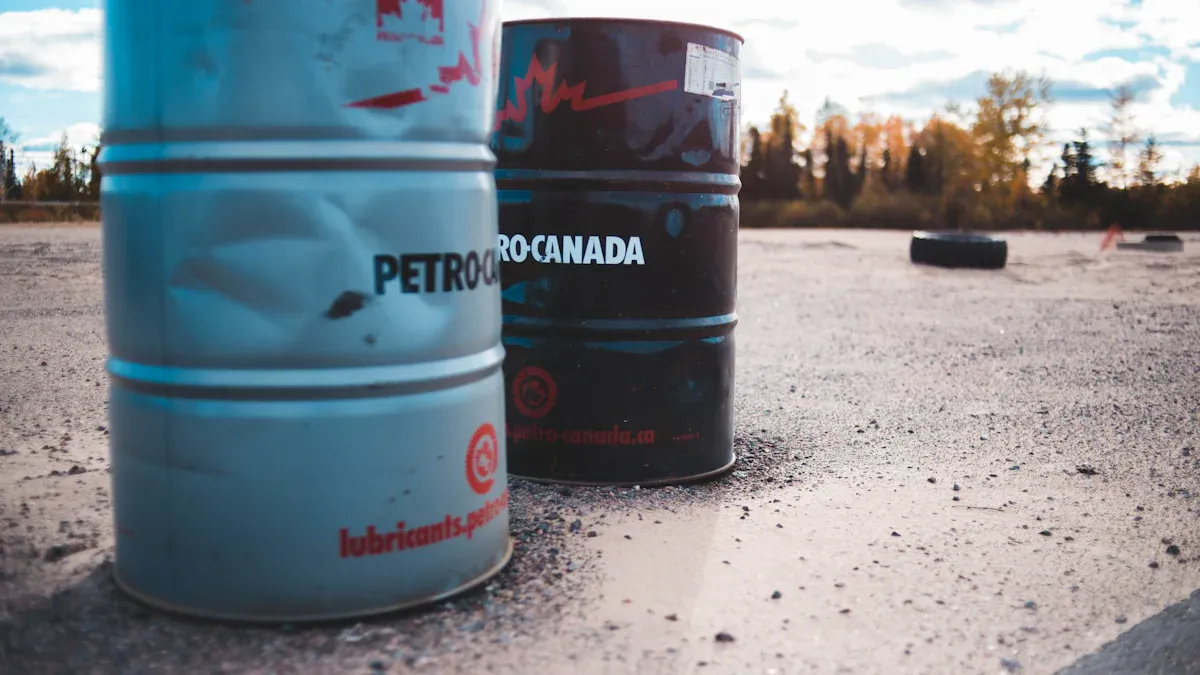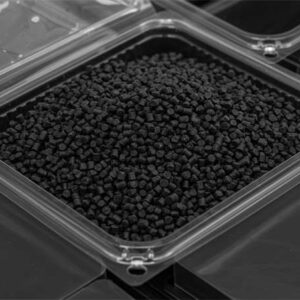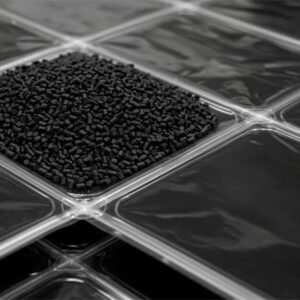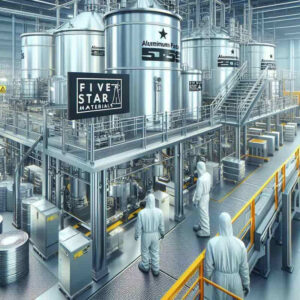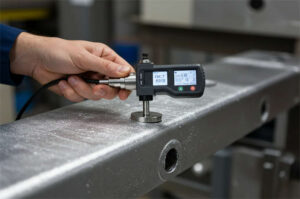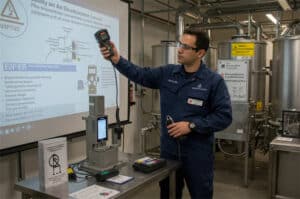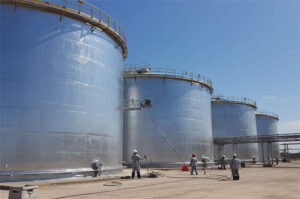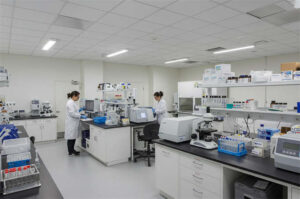You may ask if aluminum paste uses provide better protection than other metallic pastes or anti-seize products. The answer depends on what you need. Copper anti-seize is best for high heat, as it can handle up to 1,800 degrees Fahrenheit. Use copper if you need electrical conductivity. However, choose aluminum paste for low conductivity applications. It also lowers the risk of galvanic corrosion, making aluminum paste uses ideal when you need electrical insulation. Additionally, it works well with non-aluminum fasteners too.
Key Takeaways
- Aluminum paste works well on aluminum parts. It helps stop rust and keeps electricity from passing through. Copper paste is good for places with a lot of heat. It is used on exhaust bolts and brake parts. But copper paste can make aluminum rust. Nickel paste stops rust very well. It can handle very high heat. It is safe to use on stainless steel. Anti-seize products stop metal parts from sticking together. They work best with different metals and in hot places. Always pick the right product for the job. Think about the heat, the metals you use, and if you want to block or let electricity pass.
Aluminum Paste Uses
What Is Aluminum Paste
Aluminum paste is made of tiny aluminum flakes in a liquid. Makers use pure aluminum and break it into small pieces. They use machines and oils to make the flakes flat and thin. The paste has aluminum powder, calcium oxide, and an organic liquid. This mix gives the paste its shiny look and special features.
Key Benefits
Aluminum paste has many good points over other metallic pastes. It gives a strong metallic shine and reflects light well. This helps surfaces stay bright and safe from UV rays. The paste also keeps out water and chemicals, so it stops rust. You will see a bright shine and thick color, especially on cars. It can be used for many kinds of jobs.
| Benefit | Description |
|---|---|
| Metallic Effects | Gives a better metallic look for paints and coatings. |
| High Reflectivity | Protects surfaces from UV rays and lasts longer. |
| Corrosion Resistance | Stops water and chemicals, so there is less rust. |
| Visual Appeal | Makes things look bright and shiny with good coverage. |
| Versatile Applications | Can be used in cars, buildings, and for decoration. |
Typical Applications
Aluminum paste is used in many fields. Here are some common uses:
- Cars: Makes car parts and paint look shiny and metallic.
- Printing inks: Adds sparkle to labels and printed things.
- Cosmetics: Makes nail polish and eye shadow look shiny.
- Building materials: Makes paints look better and last longer.
Car paints with aluminum paste do not scratch easily and look new longer. Factory machines use it to protect against hits and chemicals. Aluminum paste is good for making things look nice and last a long time.
Metallic Pastes
Types of Metallic Pastes
There are many kinds of metallic pastes you can buy. Each one works best for certain jobs. The most common types are:
- Copper Paste: It works well when things get very hot or need lots of pressure. You can use it on brake parts and exhaust bolts.
- Nickel Paste: This paste can handle even hotter places than copper. It is good for stainless steel and tough places.
- Aluminum Paste: It helps stop rust and is safe for aluminum parts.
- Graphite-Based Pastes: These are slippery and help things move, but they do not work with every metal.
Some metallic pastes have heavy metals like nickel. These can be bad for your health and the planet. They might cause lung cancer. Always read the safety data before you use them.
Common Uses
Metallic pastes are used in many machines and factories. Here are some ways people use them:
- They stop parts from sticking together when it is hot or under pressure.
- They keep threads and bolts from getting rusty.
- They make it easier to put machines together and take them apart.
- They help moving metal parts last longer.
Factories use metallic pastes to help machines work better. These pastes help stop expensive repairs and machine stops.
Pros and Cons
You should think about the good and bad sides before you pick a metallic paste. The table below shows how some types compare:
| Type of Paste | Advantages | Disadvantages |
|---|---|---|
| Copper Paste | Handles heat well, lets electricity flow | Can cause problems with aluminum parts |
| Nickel Paste | Works in very hot places, safe for stainless steel | Can hurt health and the environment, costs more |
| Aluminum Paste | Good for aluminum, stops rust | Does not work in very high heat like others |
| Graphite-Based Paste | Makes things slippery | Might not work with all metals |
Tip: Always use the right paste for the metal you have. Some pastes, like those with lots of graphite, do not work for every part.
You will see that aluminum paste uses are mostly for stopping rust and working safely with aluminum. Other metallic pastes can take more heat but may have more risks or not work with every metal.
Anti-Seize Products
What Is Anti-Seize
You can find anti-seize in many shops and garages. These products help stop metal parts from sticking or rusting. Most anti-seize has oil and solid pieces mixed together. The solid pieces can be copper, aluminum, or nickel. These parts help lower friction and keep bolts and nuts from getting stuck. They work even when it is hot or under pressure.
- Anti-seize lubricants help parts move and stop rust.
- They have a grease base that works well when it is cold.
- Metal fillers help when it gets hot or needs more protection.
- You can get anti-seize as pastes, greases, or coatings.
It is important to pick the right anti-seize. Think about how hot it gets, what metal you use, and where you use it.
When to Use
Use anti-seize when you want to put things together or take them apart easily. These products work well when it is very hot. For example, use them on exhaust bolts, brake parts, or spark plugs. They also help in wet or salty places, like near the ocean, where rust is a problem.
- Use anti-seize for jobs with high heat.
- Put it on to stop rust and sticking in wet places.
- Pick marine-grade anti-seize for boats or docks.
- Use it if you want to take things apart later.
Tip: Anti-seize helps make repairs faster and easier next time.
Differences from Metallic Pastes
You might wonder how anti-seize is different from metallic pastes or aluminum paste uses. Anti-seize stops parts from sticking and fights rust. It works well when it is very hot or under a lot of pressure. Metallic pastes, like aluminum or copper paste, have special jobs. For example, aluminum paste makes things shiny or protects aluminum from rust. Anti-seize works with more metals and in tougher places.
| Feature | Anti-Seize Products | Metallic Pastes |
|---|---|---|
| Main Purpose | Stop sticking, stop rust | Make things look good, protect |
| Temperature Range | Very high | Depends on the type |
| Common Additives | Copper, nickel, aluminum | Aluminum, copper, graphite |
| Best For | Putting together, taking apart | Protecting certain metals |
You should always use the right product for your job. This helps you get the best results and keeps things safe.
Aluminum Paste vs. Copper and Nickel Pastes
Temperature Resistance
It is important to know how much heat each paste can take. Each paste type can handle a different top temperature. If you pick the wrong one, your parts might break when they get hot.
Here is a table that shows how much heat each paste can take:
| Paste Type | Maximum Temperature Resistance (°C) |
|---|---|
| Nickel Paste | 1316 |
| Aluminum Paste | 375 (varies by specific product) |
| Copper Paste | Not specified, but often up to 1000 |
Nickel paste is best for the hottest jobs. You can use it in engines or turbines. Copper paste also works in high heat, up to 1000°C. It is good for exhaust bolts and brakes. Aluminum paste works up to 375°C, but some types can go higher. Use aluminum paste for jobs with medium heat, like car parts that do not get super hot.
Tip: Always read the label to check the heat range before using any paste.
Corrosion Protection
Corrosion can damage metal parts. You need a paste that keeps your parts safe from rust and chemicals. Each paste gives a different level of protection.
- Aluminum paste keeps aluminum parts safe from rust and water. It is the best pick for aluminum bolts or surfaces. It also helps stop galvanic corrosion, which happens when two metals touch and react.
- Copper paste works on many metals, but not with aluminum. Using copper and aluminum together can start galvanic corrosion. Use copper paste for steel or iron parts instead.
- Nickel paste gives strong protection from rust and chemicals. You can use it on stainless steel and aluminum without copper problems. Nickel paste is good for tough jobs in harsh places.
If you work with aluminum, use aluminum paste to stop corrosion. For stainless steel or mixed metals, nickel paste is safer.
Electrical Conductivity
Electrical conductivity is important if your parts carry electricity or need to block it. Each paste has different properties.
- Aluminum paste does not let electricity flow easily. Use it when you want to block electricity between parts. This is helpful for some car and machine parts.
- Copper paste lets electricity flow well. Use it if you need electricity to move, like in grounding bolts or electrical connections.
- Nickel paste also lets electricity flow, but not as much as copper. It is safe for stainless steel and aluminum, and does not cause copper corrosion.
You will find aluminum paste in electronics like solar cells, capacitors, and inductors. In solar cells, aluminum paste acts as a back field electrode. It helps move current and makes the battery work better.
Note: Always pick the paste that matches your electrical needs. Use aluminum paste for blocking electricity and copper paste for letting it flow.
To get the best results, think about heat, corrosion, and electricity before you choose. Aluminum paste is best for aluminum parts, medium heat, and when you want to block electricity. Copper and nickel pastes are better for high heat or when you need electricity to move.
Aluminum Paste vs. Anti-Seize
Seizing and Galling Prevention
You do not want metal parts to stick together. This is called seizing or galling. When you tighten bolts, the metal can rub and stick. Sometimes, the metal can even weld itself. This makes it hard to take things apart later. Both aluminum paste and anti-seize help stop this from happening.
Aluminum paste puts a thin layer between metal parts. This layer cuts down on friction. It helps you loosen bolts and nuts after many years. Anti-seize also makes a barrier. It uses metals like copper, nickel, or aluminum in grease. These products work well when it is hot or under heavy pressure.
Tip: Always use a thin, even layer on threads and contact spots. Too much paste can bring in dirt.
If you use aluminum parts, aluminum paste gives good protection. It stops galling and makes repairs easier later. Anti-seize works better for mixed metals or very high heat.
Metal Compatibility
You need to pick the right product for your metals. Not every paste is safe for all metals. Some can even hurt your parts if you choose wrong.
- Aluminum Paste: Safe for aluminum parts. It stops galvanic corrosion, which happens when two metals touch and react. You can use it on aluminum bolts, nuts, and fittings.
- Anti-Seize Products: There are many types. Copper anti-seize works well with steel and iron. Nickel anti-seize is safe for stainless steel and high heat. Some anti-seize can hurt aluminum parts. Copper can react with aluminum and cause rust.
| Product Type | Best Metals | Avoid With |
|---|---|---|
| Aluminum Paste | Aluminum, mild steel | None (very safe) |
| Copper Anti-Seize | Steel, iron | Aluminum |
| Nickel Anti-Seize | Stainless steel | None (very versatile) |
Always check the label before using any paste. This helps you avoid damage and get the best results.
Application Scenarios
There are many times you must pick between aluminum paste and anti-seize. Think about the job, the metals, and where you use them.
- Electrical Insulation: Aluminum paste does not let electricity pass easily. Use it when you want to block electricity between parts. This is important in some cars and machines.
- High Heat: Anti-seize can handle more heat than aluminum paste. Use copper or nickel anti-seize for exhaust bolts, brakes, or engines.
- Corrosion Risk: Aluminum paste keeps aluminum parts safe from rust and water. It works well in wet or salty places. Nickel anti-seize also protects well, even with strong chemicals.
- Ease of Disassembly: Both products help you take things apart later. Aluminum paste is best for aluminum parts. Anti-seize is better for mixed metals or if you do not know what metals you have.
Note: Aluminum paste uses are best when you need electrical insulation and corrosion protection for aluminum. Anti-seize gives you more choices for high heat and mixed metals.
If you want a quick guide, remember: Use aluminum paste for aluminum parts, electrical insulation, and medium heat. Use anti-seize for high heat, mixed metals, and tough places.
Comparison Summary
Quick Reference Table
This table helps you see the main features of each product. It shows how aluminum paste, copper paste, nickel paste, and general anti-seize are different. Use this guide to help you choose the best one for your job.
| Product Type | Max Temp (°C) | Best For | Electrical Conductivity | Corrosion Protection | Safe for Aluminum? |
|---|---|---|---|---|---|
| Aluminum Paste | ~375 | Aluminum parts, medium heat, electrical insulation | Low | Good | Yes |
| Copper Paste | ~1000 | High heat, steel, iron, electrical connections | High | Moderate | No |
| Nickel Paste | ~1316 | Stainless steel, harsh chemicals, high heat | Medium | Excellent | Yes |
| General Anti-Seize | Varies | Mixed metals, easy disassembly, rust prevention | Varies | Good | Depends |
Tip: Always read the label. Check the temperature range and which metals you can use it with.
Pros and Cons Overview
It is smart to know what each product does well and what it does not. This helps you pick the right one.
Aluminum Paste
- 👍 Works great for aluminum parts and stops rust.
- 👍 Blocks electricity between metal pieces.
- 👎 Not good for jobs with very high heat.
Copper Paste
- 👍 Handles high heat and lets electricity move.
- 👍 Works well on steel and iron parts.
- 👎 Can cause rust on aluminum parts.
Nickel Paste
- 👍 Best for very high heat and strong chemicals.
- 👍 Safe for stainless steel and aluminum.
- 👎 Costs more and might be risky for health.
General Anti-Seize
- 👍 Makes it easier to take things apart later.
- 👍 Protects against rust and metal sticking.
- 👎 Some types do not work with every metal.
Remember: Choose the product that fits your metal, how hot it gets, and if you need to block or let electricity flow.
Choosing the Right Product
Key Factors
You should think about a few things before picking a paste or anti-seize. Every job is different. You want to use the right product for your project so it works well.
- Temperature Resistance: Find out how hot your parts will get. Some products work better when it is very hot. For example, copper anti-seize can take heat up to 1800°F (982°C). You use it on sparkplug threads, ground screws, and exhaust bolts.
- Corrosion Protection: Pick products that stop rust and block chemicals. Aluminum paste is good for aluminum parts. Nickel paste protects stainless steel from rust.
- Metal Compatibility: Make sure the product is safe for your metal. Copper paste is good for steel and iron. Aluminum paste is safe for aluminum. General anti-seize works with many metals like stainless steel, aluminum, and titanium.
- Electrical Conductivity: Think about if you want to block or let electricity flow. Aluminum paste blocks electricity. Copper paste lets electricity move through.
- Ease of Disassembly: Use anti-seize if you want to take things apart later. It helps bolts and nuts come loose even after a long time.
Tip: Always check the product label. You will see the heat range and which metals it works with.
Here is a table that shows how experts pick products for different jobs:
| Product Type | Temperature Resistance | Applications |
|---|---|---|
| Copper Anti-Seize | Up to 1800°F (982°C) | Sparkplug threads, ground screws, automotive screws, nuts, pipes, exhaust bolts, brake caliper bolts |
| General Anti-Seize | Varies | Suitable for stainless steel, aluminum, titanium, and other materials |
Aluminum paste is good for aluminum parts. It works well with medium heat. It helps block electricity between metal pieces. Copper and nickel pastes can take more heat. They work with different metals. Anti-seize products help you take things apart easily. They also stop rust from forming.
When you pick a product, think about these things:
- Find out how hot your parts will get.
- See if the product can stop rust in your area.
- Make sure the paste is safe for your metal and chemicals.
Always put on gloves and use a thin layer. This keeps you safe and helps the paste work well.
FAQ
What is the main difference between aluminum paste and copper paste?
Aluminum paste is for aluminum parts and blocks electricity. Copper paste is better for high heat and steel or iron. Copper paste lets electricity move, but aluminum paste stops it.
Can you use aluminum paste on stainless steel?
You can use aluminum paste on stainless steel. It helps stop rust and keeps parts from sticking. Always read the label to make sure it is safe for your job.
Does aluminum paste prevent rust in wet environments?
Aluminum paste keeps metal safe from water and chemicals. You can use it in wet or salty places to stop rust. It works well outside and near the ocean.
Is anti-seize the same as metallic paste?
Anti-seize and metallic paste are not the same thing. Anti-seize stops parts from sticking and helps you take them apart. Metallic pastes make things shiny or protect some metals.
How much aluminum paste should you use?
You only need a thin, even layer of aluminum paste. Using too much can bring in dirt or make a mess. Just cover the surface for the best results.

